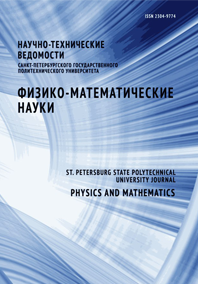Formation features of motion trajectory of mercury-199 ions in the quantum frequency standard for space applications
The necessity of developing an atomic clock that can operate without adjusting the scale during a satellite-to-Earth communication session is substantiated. This is necessary to place a satellite constellation in higher orbits, where a stable and long communication session with the Earth cannot always be realized. It is also necessary during a long flight in outer space (between planets). The problems that arise in the operation of the current models of atomic clocks now in use in orbit are mentioned. It has been established that the most promising solution to this problem is the use of atomic clocks on mercury-199 ions. The main problem that arises when reducing the size of the structure of atomic clocks on mercury-199 ions when they are placed on a satellite or on an autonomous space mobile object is considered in detail. To solve this problem, a mathematical model has been developed to calculate the trajectory of mercury-199 ions in the Paul trap when its dimensions change, which must be selected in accordance with the technical characteristics of the satellite or moving object. The modeling results of ion motion trajectory depending on the parameters of trap rods and control voltages are presented. Options for determining the optimal parameters of ion trap under conditions of limited volume and mass of the atomic clock are proposed.


